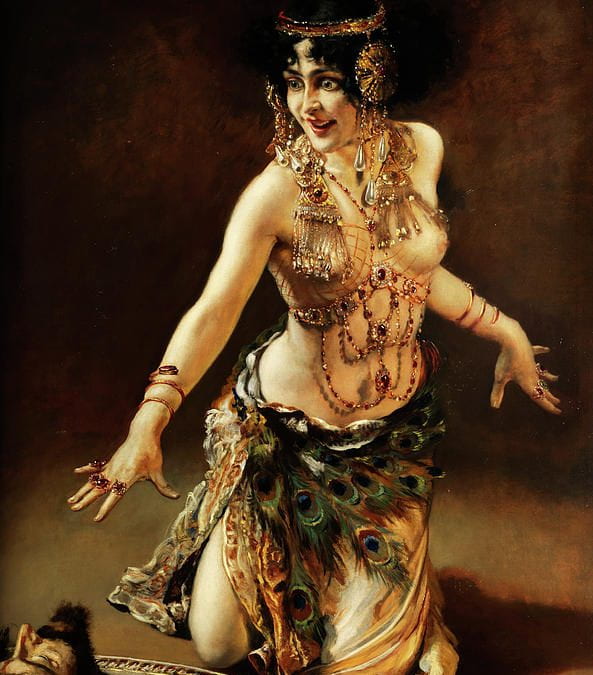How does Duffy transform the biblical story of Salome in this poem?
The biblical story of Salome features Salome as the murderous villain who caused the end of martyr John the baptist and got served his head on the plate. Duffy has taken this symbol and converted it into one of the attractive feminity being a tool for scheming. By using a contemporary setting to reposition Salome as the femme fatale, the avenging angel with a dubious moral compass, Salome avenges the women of history by taking out the “blighters” who’ve wronged them. Duffy uses the common setting of the morning after a one-night stand and follows the thought process of Salome as she recollects and familiarises herself with her surroundings, after a night of vengeance and the murder of John. The contemporary setting is given by the references to “booze, […] fags [and] sex” all of which are things that the actual Salome probably wouldn’t have had free access to at the time. The conventional roles of the one-night stand are further flipped and Salome, the woman, is depicted as in control, and not at the mercy of the man. The power dynamic is distinctive and her role as a very self-aware murderer but also a woman taking charge of her sexuality is a play on the symbol of Salome in the bible, commonly depicted as the villain.
One characterisation that Duffy explores is the idea of Salome being indifferent or unconcerned about her role as an avenging angel, murdering the bastard men. This is supported by the listing of “Peter? Simon? Andrew? John?” as common names when identifying the man next to her as to suggest evoke a sense of carelessness as she isn’t bothered to learn his name, and he fits the profile of any common jerk. The names themselves are also an allusion to the holy men mentioned in the bible as Jesus’s disciples, where Duffy is suggesting that those men were all the same, but also of the type to be a “blighter”, as compared to the man next to her.
Other points of analysis:
- The role of the maid as a symbol of innocence
- Supported by the “innocent clatter”, the indifference and the fact that the realisation for change takes place right after
- She also only gets a moment in the poem and is then quickly forgotten
- ellipses to show the fill in the blank and moments of realisation
- Myths of female sexality
